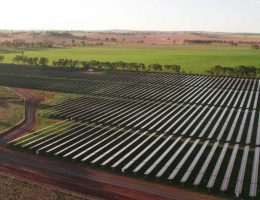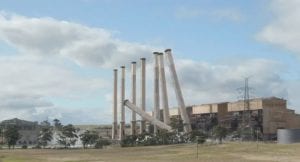The federal Coalition government has injected another $1 billion into the $10 billion Clean Energy Finance Corporation – the same Labor-established green bank his party tried for years to abolish and hamstring – to underwrite renewables integration and grid stabilisation technologies.
The Liberal National government said on Wednesday that it would establish a $1 billion Grid Reliability Fund to support investment in new energy generation, storage and transmission infrastructure, including projects shortlisted for its Underwriting New Generation Investments (UNGI) program.
The joint statement from Prime Minister Scott Morrison, energy minister Angus Taylor and minister for finance Mathias Cormann said eligible investments for the new fund would include energy storage projects like pumped hydro and batteries, transmission and distribution infrastructure, and grid stabilising technologies.
The fund will be administered by the CEFC, drawing on what the PM described as its “energy and financial markets expertise” – a welcome upgrade from previous LNP assessments of the Fund as a “honeypot” for “wild and wacky proposals… banks would not touch in a fit.”
But it’s taken a while for this shift in thinking to take place – the PM also noted that the $1 billion fund represents the first new capital provided to the CEFC since it began.
Good call by @ScottMorrisonMP Govt to put an extra $1 billion into the @CEFCAus – worth recalling that it was the Abbott Govt’s policy to abolish it and that one of my first decisions in 2015 was to retain it. Good progress. As far as overall emissions reduction task: 1/2
— Malcolm Turnbull (@TurnbullMalcolm) October 29, 2019
The CEFC said in a statement that it welcomed the “significant initiative” to create the new fund, and was pleased the federal government had expressed confidence in it to help build a stronger energy grid.
“We recognise that investment in new generation, storage, transmission and infrastructure is critical to support the security and reliability of Australia’s energy grid. We look forward to working with governments and potential investors in accelerating the development of these opportunities.”
The Coalition said it hoped the fund would be used to help unlock private sector investment for projects that boost security of supply for the grid and, in doing so, put downward pressure on prices.
But Morrison also conceded it would be used to keep “an eye to the future,” which could be a politically tactful way of saying it will not be used for new coal plants or upgrades to old ones – a fact that’s bound to outrage some in the far right of his party.
Interesting drop to the Murdoch press just now, given Morrison’s coal stoush with Canavan – extra funding for #CEFC. Maybe designed to mute the rabid pundits pic.twitter.com/ZTWzX16ADo
— ????Michael West (@MichaelWestBiz) October 29, 2019
“The government will only refer UNGI projects that reflect the CEFC’s legislative mandate for consideration under the Fund,” the statement stressed. Which presumably means that Trevor St Baker’s proposal to upgrade the Vales point coal plant, and the handful of gas generators, would not be part of its remit.
“The Grid Reliability Fund builds on our strong action to stabilise the grid and get the energy generation balance right, to deliver affordable, 24/7 reliable power,” said Taylor, carefully sticking to his favourite energy tropes.
“It is no secret that the National Electricity Market is under pressure – this fund is designed to tackle that and is part of a suite of initiatives that the government is delivering to ensure when people flick the switch, the lights come on and stay on.”
Worryingly, however, Cormann also said the government would also update the CEFC enabling legislation to ensure the Grid Reliability Fund could support suitable projects, which the Greens and others have taken to mean it will stretch the CEFC’s mandate to include gas – and maybe even coal – projects.
As RenewEconomy understands it, current CEFC legislation already allows for investment in low emissions technologies, which could also include gas, particularly where gas generation enables additional deployment of low or zero emissions generation.
But it cannot invest in coal, and the Grid Reliability Fund should not be able to change that.
“The burning of coal and gas is biggest cause of the climate crisis. We will not support any moves to subsidise ageing dirty power stations,” said acting Greens leader Adam Bandt.
“It’s an absolute outrage to see this conservative government again try and sabotage the clean energy revolution by wrecking the CEFC’s mandate.
“The Greens took a plan for a $6 billion Grid Transformation fund to the election, so of course we support new funding for the grid and storage, but we not allow it be used as a Trojan Horse for coal,” Bandt said.
“The Underwriting New Generation Program is is a rogue market intervention, that goes beyond the ACCC recommendation, has no transparency, and is still missing the promised program guidelines on how it will actually operate,” said The Australia Institute’s Richie Merzian.
“It is unbelievable and certainly legally questionable that the Clean Energy Finance Corporation could be forced by Minister Taylor to fund gas projects, when gas is a fossil fuel and major contributor to the climate crisis.”
Energy Networks Australia also welcomed news of the new fund, as recognition of the key role networks would play in enabling a sustainable energy future.
“The challenge we face is not just how much electricity is being produced, but how to efficiently get it to our customers,” said ENA chief Andrew Dillon.
“Transmission networks are the electricity super-highways, already transporting record levels of solar and wind while connecting firming technologies such as pumped hydro and batteries.
“More transmission infrastructure and interconnection between states are essential to support renewable power generation, keep electricity reliable and link markets to keep customer costs down.”
Dillon also said the fund was key to addressing challenges to the grid from Australia’s booming rooftop solar uptake.
“Our grid is increasingly becoming a two-way flow of electricity, with millions of households becoming small generators feeding back into a network that was never designed to operate that way,” he said.
“This fund may create opportunities for further investment in digital technologies that will make our distribution grids the platforms of a smarter energy future.”









